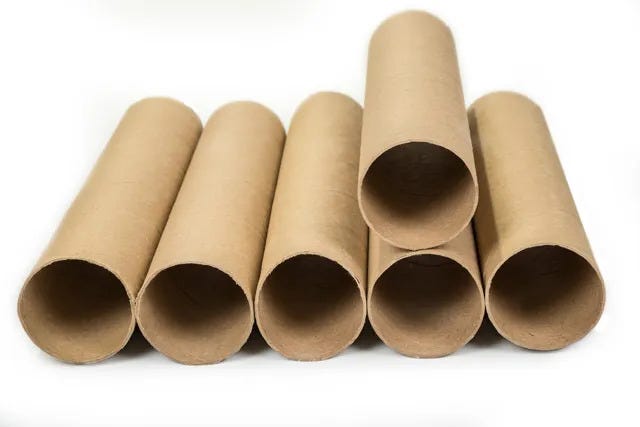Paper tubes and cores are used to package films, metal, foil, tape labels, clothes, floor coverings, and yarn. Manufacturers also provide spools and reels, mailing and packaging tubes, construction paper cores, and paper straws. Choosing the right product for your industry involves outlining your requirements and application and working with experienced paper core manufacturers. Here are some of the things to assess when selecting paper cores:
Type of Paper Core
The first thing to determine when shopping for paper cores is the type you want for your application. Paper core manufacturers offer two primary types of cores: spiral and convoluted. Spiral cores are formed by winding the ply or strip of paper at an angle to the tube’s axis. The spiral pattern creates cores with exceptional strength, stability, and even stress distribution. This type is commonly used in packaging applications. You can use spiral paper cores to wind films, papers, and textiles or transport rods, tubing, wires, tool handles, and cylindrical components.
Convoluted or parallel cores are formed by wrapping the ply edges parallel to the axis. The final tube offers high crush resistance, bend strength, and dynamic strength and is used in various industries from textile to manufacturing. Convoluted cores are also commonly used for packaging, storing, and transporting films, papers, and nonwoven fabric rolls. The ply edges are glued together and the tubes provide stability, uniformity, and easy handling. Industries can use spiral and convoluted paper cores interchangeably, but some applications suit one type.
Relevance to the Job
Choosing paper cores starts with specifying the weight, dimensions, strength, and stability needed during storage, transportation, and application. Paper tube manufacturers must make sure the final tube meets quality requirements, which include producing accurate lengths and wall thickness. The crush strength and quality of the paper and adhesives used must also match your heavy-duty application. Choosing quality paper cores reduces the chances of inefficiencies that may come as a result of using a less suitable product.
When selecting paper cores, work with manufacturers that use high-yield paper grades. High-yield papers reduce wastage and costs, resulting in more affordable cores. Make sure the paper type used in construction is consistent in smoothness, water holdout, and finish. These materials result in smoother manufacturing processes, which deliver higher-quality paper cores. Choose the right quality for your application, whether it be packaging, forming, containing, construction, insulation, dampening, spacing, or supporting.
Customization and Technology
Paper cores can be customized to meet your company’s specific needs. Basic customization includes width, diameter, and core site. Manufacturers may also offer custom printing services if you want cores with stripes, patterns, logos, and other details. Some manufacturers offer solid-dyed cores with custom colors for the innermost ply and outermost wrap. You’re not limited to the default brown paperboard color.
Customizing the ply and wrap allows you to protect the cores from water damage, heat, and other elements. The wrap also gives you a canvas for branding your cores with custom graphics, labeling, and colors. Manufacturers may add colors to the kraft or paperboard during the winding process. When selecting paper cores, assess the type of technology the manufacturer uses. Search for companies that feature state-of-the-art technology to get the most use out of your paper cores.
Work With Trusted Paper Core Manufacturers
Choosing paper cores for your industry and application involves many assessments, including application, quality, cost, availability, and manufacturer production capacity. Work with custom core manufacturers to make sure the overall functionality of the products aligns with your company’s needs. Speak to paper core manufacturers today to find out more about ordering custom cores and tubes for your applications

